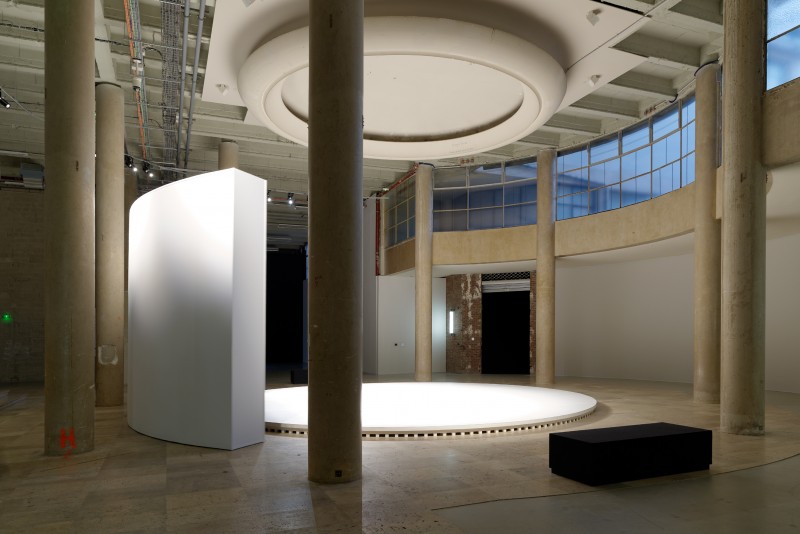After the Hot Mess: Philippe Parreno at the Palais de Tokyo

The following review was originally published in Art21 in June, 2014.
In the first week of January, I found myself in Paris. It was raining and we had just walked down the Champs Élysées, where endless streams of vendors sold funnel cake, crêpes, spätzle, pretzels, paella, beer, wine, glögg, roasted nuts, chocolate, plastic mobile-phone cases, stuffed animals, stickers, illuminated wands, carnival hats—mile upon mile of everything one would never keep was suddenly available. Everyone gathered to mill about in proximity of warm, sweet smells and clean, reflective surfaces. Children skated around an ice rink that contained rotating, life-size plastic bears, their paws stuffed into skates; the ice was melting, pooling and muddy on the sidewalk. In one photo opportunity, a large vitrine of poorly stuffed, animatronic animals bobbed their heads out of sync with blaring house music. Arriving at the Palais de Tokyo after that hot mess to see Philippe Parreno’s Anywhere, Anywhere Out of the World was perfect: I couldn’t tell if I’d entered the subconscious of our consumer-driven mania or a prophetic vision of our collective future.
Visible from the ticket counter, a massive floor-to-ceiling screen displayed images of protesting children. Around the corner, atop a stepped platform, a baby-grand player piano emitted the music of Stravinsky. Ashes fell from an overhead, rotating machine onto the piano’s black wooden lid. The juxtaposition of a beautiful piano playing perfect music in an empty room and the oily, ambiguous debris falling from above—all parts driven mechanically—brought forth memories of war.
In the next room, black lights illuminated fluorescent drawings on the wall, alternating with powerful lights within a glass stage; seated upon it, alongside an array of unidentifiable tools, a complicated writing machine dutifully produced Monroe’s signature. Here, too, another player piano produced another part of the Stravinsky piece. A viewer could push a nearby wall-size bookcase to rotate it; the revealed opening led to a smaller, slightly claustrophobic room. Contained therein was a reinstallation of a 2002 New York exhibit with drawings by John Cage and Merce Cunningham: quotations of movement, dance, and sound. Each day, one Cage drawing was replaced with a Cunningham drawing. In this context, the transition between works underscored a greater architectural instability.
Another large flight of stairs opened onto a felt-lined basement room that was dark, save for a suite of massive, alternately blank marquee signs hung from the ceiling; these periodically shocked the room with light and sound. Various light fixtures made different sounds: light bulbs popped and hummed as neon tubes zinged or buzzed. Typically, marquees sell things—Broadway shows, haircuts, movies—but these were stripped of typical language, emanating light as if communicating with one another like instruments in an orchestra.
It was not always clear what was and was not part of the exhibition. Down an easily missed set of small stairs, for instance, I found my way into a pristine screening room with red velvet chairs; I heard muffled sounds overhead, like explosions in the distance. A second screening room was directly adjacent, similarly carpeted and lit. It was noticeably cold, and I stood alone, breathing the smell of new carpet—astonished and strangely pleased by how frightened I was—waiting, like the screen, for something to happen (some old ghost of Hollywood, maybe), some last hallucination of opulence. While the installation may not have belonged to Parreno, it did seem like the perfect end.